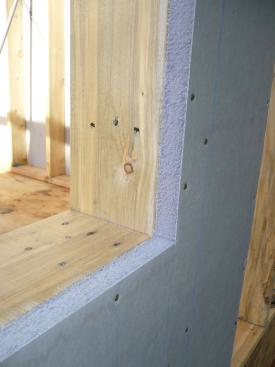
Image Credit: Anders Lewendal
Anders Lewendal, a builder in Bozeman, Montana, is wrestling with a familiar dilemma: What’s the right amount of insulation to put in a house?
“Our theory,” he writes in Q&A post at GreenBuildingAdvisor, “is that too little insulation wastes energy and equally, too much insulation wastes energy. Where is the sweet spot in each climate zone?”
To that end, Lewendal is proposing more performance testing.
“We are interested in knowing if GBA has conducted any performance testing that makes diminishing returns conclusions,” writes Lewendal. “If not, we are hoping GBA might give us some advice that makes our experiment productive.”
[Coincidentally, Lewendal is the founder of a “build American” campaign promoting the use of U.S. building materials. GBA has published two articles on his efforts: One Builder’s Buy-American Strategy and A 100-Year-Old Energy Star Home.]
The work has already been done
Lewendal could save himself the trouble of a new study, replies GBA senior editor Martin Holladay, because the work has already been done.
“What you call a ‘theory’ is a truism enshrined in our building codes,” Holladay says. “The entire reason that the minimum insulation values in U.S. building codes are higher in Minnesota than in Florida is the well-understood calculation that you call a ‘theory.’”
If you double the R-value of your insulation, the rate of heat loss is cut in half, Holladay continues. “The only questions are (a) whether more insulation is a good investment, and (b) whether the embodied energy of the insulation materials exceeds the energy that is likely to be saved over the lifespan of the insulation,” he says.
Lewendal proposes the construction of three identical houses and studying the effects of adding more insulation. Although it’s possible this exact test has not…
Weekly Newsletter
Get building science and energy efficiency advice, plus special offers, in your inbox.

This article is only available to GBA Prime Members
Sign up for a free trial and get instant access to this article as well as GBA’s complete library of premium articles and construction details.
Start Free TrialAlready a member? Log in





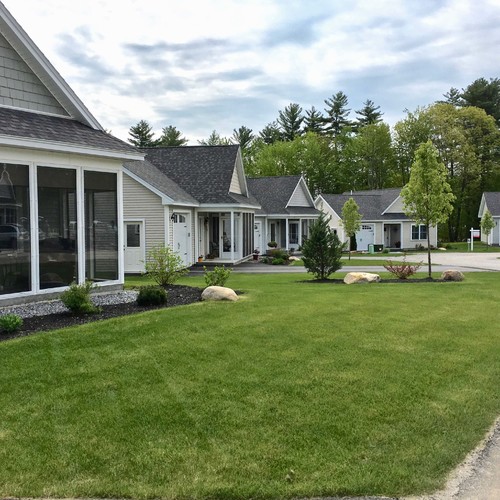
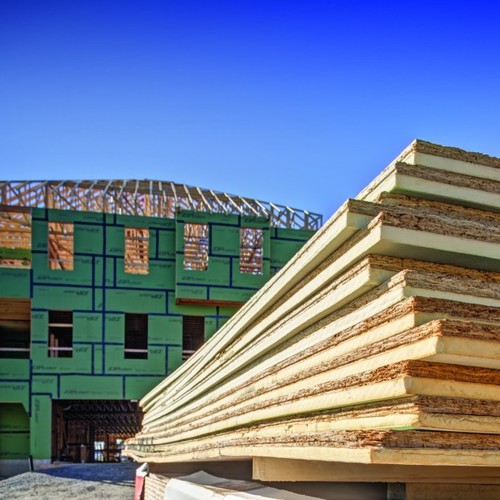
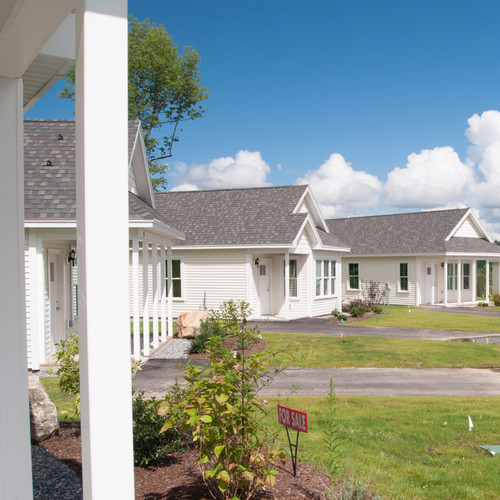
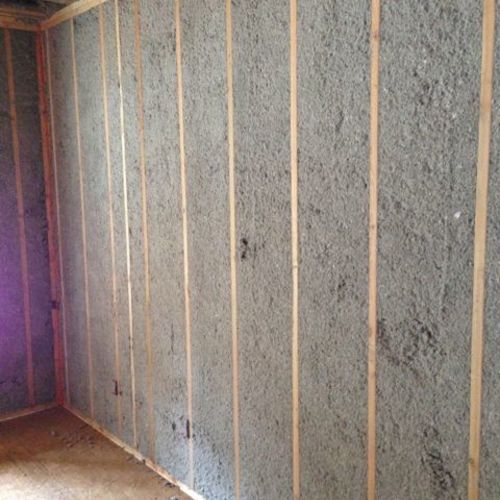






18 Comments
The comfort sweet spot.
Part of the PassivHaus spec is about the minimum and maximum temperatures of the exterior wall/ceiling surfaces, which is in part a comfort argument. At R40 (whole-wall) the temperature extremes are well-bounded in a MT climate and WAY more comfortable than code-min, but would probably still fall outside the PassivHaus boundary.
The net-present-value on future energy savings calculations as well as the opportunity cost relative to PV solar can be useful markers, but paying for accurate energy use modeling of the house may be more valuable and cost-effective than blindly spending on ever more R-value (or PV.) But there will never be an single sweet spot, by any metric.
there are very few PH
there are very few PH projects w/ R-70 walls. chris corson's in 7400 HDD maine isn't even R-60. thorsten's on sunrise was R-75 (14000 HDDs). based on the number of projects i've looked over (a lot), i'd estimate under 2%. R-70 is overkill for PH in scandinavia, most of the projects in sweden are R-50 to R-60.
PHPP doesn't tell a user HOW to get to 4.75kBTU/ft2a. only IF. HOW they get there is up to the USER.
despite what i may think about the lackluster leadership at PHIUS, is there any instance where they've ever claimed R-70 walls give homeowners the best value?!? i've never seen it.
also, i'd love to see a PH wall where the embodied carbon of the added insulation actually exceeded the CO2 savings. does. not. exist.
Depends on how and what "carbon" you're calculating.
Embodied carbon would be a good thing, if it's the sequestered as carbon in cellulose. It's quite a different animal if you're talking about the CO2 equivalent global warming potential of the HCF134a of US-made XPS at high-R, which would exceed the CO2 savings over a code-min fiberglass insulated over the anticipated lifespan of the building if XPS were only insulation used to meet code-min.
Lewendal isn't way far off the mark with R-70 for what isdone to hit PassiveHouse energy use levels in a US climate-zone 6 location. There's a PassiveHouse (5 crow-miles from my house) in zone 5 that was built with ~R58-R66 walls, a location with a winter climate slightly cooler than Stockholm, but a much warmer summer climate:
.http://www.passivehouse.us/phc2011/2011%20Presentations%20PDF/Panish,%20Paul%20-%20Ad-Hoc%20Passive%20House%20-%20The%20Beaton%20Residence.pdf
Bozeman MT is colder in winter than the bigger population centers of Sweden (Uppsala, Stockholm)- more comparable to Boden, in the far north, but much hotter (needs air conditioning) than any Swedish location in summer.
http://weatherspark.com/#!dashboard;a=USA/MT/Bozeman
http://weatherspark.com/#!dashboard;a=Sweden/Boden
Most of Scandinavia is fairly temperate, (even in high HDD locations), and cooling energy demands are miniscule. The cooling degree days are enough to actually matter in Bozeman, but not so much in Uppsala. The Baltic moderates seasonal climate extremes & averages quite well.
Lewendal never made the assertion that PHIUS was offering up R70 as a best value, but it's not a 2% outlier for that climate either, and it's not an outrageous value to throw out there.
cost of energy
One problem is the cost of heating/cooling. It's a variable we have no control over. Let's say, this year your calcs determine that R-30 is the breaking point, and next year the electric company suddenly decides to increase your rates. 20-20 hindsight would tell you that R-40 is a hedge against rising energy costs in the future.
dana,
even the guy who did
dana,
even the guy who did PHPP for the beaton project admitted it was entirely too much insulation. this is one of the (many) issues i have w/ failing to optimize projects (e.g. PH ends up looking ridiculously difficult to achieve - in majority of instances, it shouldn't be).
Lewendal:
My best example is the PHIUS [Passive House Institute U.S.] model. They think that R-70 plus walls will give homeowners the best value.
We each have different values...
While this is all thought provoking, it feels like the original proposition asks us to be blind men in the parable of the elephant (go ahead and google that).
And I feel like you all feel that too...
What's the right R-value of a wall? I think a better question is what the good (UA) value for a house is. At least that seems to cover the whole envelope and not just one assembly that might have substantially different weightings depending on the massing of the building. Shouldn't we also be talking about the R-value of windows, ceilings, floors, etc.?
Here's an example-- a literal question that came across the energy modeling forums recently:
What is the right R-value for a wall in a house that's an A-frame. Code says one thing, "Quality" construction might say something different. I secretly joked to myself that the A-frame should be built Passivhaus-tight and then be nicknamed "Hole in the Wall" Passivhaus. :)
Given the conversation above, it definitely seems that this is a subjective question. Once we establish a clear metric or metrics (e.g. first cost, Life Cycle Cost, or as my friends here suggest... polar bears), we can then figure out a more formal way of optimizing according to that metric.
I don't mean to say that once we establish a metric, then everything is solved, but it shifts the focus away from subjective or hedonic-based or non-market services (e.g. comfort), to ones involving more easily attainable heuristics. I think we could all learn about arguments of how much insulation costs in our different local markets. I personally find that very interesting...
As for PHIUS and their metrics-- perhaps you should read Katrina's blog on it
http://passivehouse.us/blog/?p=36
And-- the only formal limitation on the R-value of a wall in Passivhaus that I've found is that the interior surface temperature on the peak heating condition must be greater than 60.8 Fahrenheit. This means that if it's -20 degrees outside, we must have assemblies that are better than R-9.04
I feel like that's attainable. ;)
I stand corrected! (response to mike eliason & Lucas Morton )
I didn't back-read Lewendal's original post on that- apparently mike did!
IIRC Beaton himself was the driver of the higher R, since as a home building contractor himself his costs didn't have the additional cost burden of contractor profit, and he was using it in some ways a demonstration project. That's not say that his double-wall layup wouldn't be reasonable for the retail clients, given that it was all comparatively low cost cellulose, not foam. The last R10 or even R20 just doesn't add much to the overall cost of the assembly. His plug loads are turning out to be WAY over the design numbers (teenagers playing video games on the big-screen?), leading to higher cooling power use, with significant cooling loads even during the winter. (His mult-split is also a bit oversized for the actual loads too.)
Lucas: I haven't looked at it recently, but I had remembered an interior surface temp higher than the 16C you cited. To be sure, that's not a particularly comfortable wall temp, but one commonly seen in houses in my neighborhood (at temps well above -20F). The additional comfort factor of R40 walls is real.
What about the weakest link?
No, not the game show...
It seems to me the amount of glazing in the design would also be another variable that makes it difficult to provide a universal answer. If the windows are ~R6, does it make sense to have over 10X that in the walls? Would a more optimal solution not utilize some of those insulation $ to further upgrade the windows? (Sort of like the PV cost comparison argument)
CAVEAT: I'm not a professional, but a homeowner trying to educate myself so I may be totally off base. This particular question is something I've been struggling with though, so appreciate any insights.
Deep Pockets
I think it just comes down to what price bracket you are catering to.
ORNL
I have used the amounts of insulation recommended by Oak Ridge National Laboratories since I started building houses. It has worked for me very well. Why re-invent the wheel? The work has been done and the 2012 Energy Code uses these figures.
http://web.ornl.gov/sci/roofs+walls/insulation/fig2.html
uh, Ed...
The IRC2012 (and even the IRC 2009) minimum R values on the high end of the ranges n the Oak Ridge numbers and now have an air-tightness requirement. The lower end of the Oak Ridge range charte would not meet current code min in many states. The new (and not yet widely adopted) IRC 2012 values are listed in TABLE N1102.1.1 :
http://publicecodes.cyberregs.com/icod/irc/2012/icod_irc_2012_11_sec002.htm
payback period
> and your payback time frame
This bears repeating with an emphasis on "your". If you sell the house, it's unlikely that you will get much more for the energy improvements. From a $ standpoint, don't do super insulation if you are only going to be there 5 years.
Insulation -terms of reference.
Should we not start from the point. How well is this home built! Then, is it made of bricks with a slate roof and we can expect it to last for 400 years - without expensive maintenance. Or is it made of sticks with a life expectancy of 50 years - and will require constant attention.
Only when the terms of reference are agreed - can we make sense of the question.
In the last couple of days we have been told that by spending $7,000 on new LED light fittings a company will save $3,000 a year on electricity. This will be repeated every year for the next 35 years, with the savings growing as the price of electricity rises and the money saved grows with interest. Insulation, heating and cooling costs need to be viewed over the expected life time of the building.
House size Or no
House size
Or no House
No heat
No AC
What all you are not stating is your starting point. You all want big comfortable homes with all the TVs and electronic gizmos of the day... But now you want to debate some impossibly easy way to do so for as close to nothing as your irrational minds and pencils and or googlings can attain.
OK....
Absolute nonsense. Easter bunnies are more real.
Presumptions Are Dangerously Incorrect
I'm not calling anyone a simpleton (yet), but DANGEROUSLY SIMPLISTIC is looking for the "energy" sweet spot for each zone. Houses need to be systems that work together, not individual components glued together. The whole point of structures it that they work for occupants. And they should last a long time with low maintenance.
"If you double the R-value of your insulation, the rate of heat loss is cut in half."
Wrong. That's not the case. It is NOT linear. The first inch does WAY more than the second inch. The first two inches do WAY more than the next four. Incorrect assumptions lead to really bad design thinking.
Just because the "Energy" benefit of MORE insulation drops off should not be the determining factor of how much insulation to use! Comfort and durability should trump. A really well insulated house that is uncomfortable will use a lot of energy. A house with "sweet spot" insulation may make managing Relative Humidity properly impossible due to dew point surface temperature problems.
BRILLIANT thinker to follow is ROBERT BEAN - http://bit.ly/HHhpOverview
People keep looking for magic bullets without any understanding of critical connections required for good design.
Response to Ted Kidd
Ted,
You wrote, " 'If you double the R-value of your insulation, the rate of heat loss is cut in half.' Wrong. That's not the case. It is NOT linear."
I'm sorry, Ted, but the original statement is correct.
Every time you double the insulation thickness, the heat flow rate is cut in half.
If you double the insulation thickness from 1 inch to 2 inches, the rate of heat flow is cut in half.
If you then double the insulation thickness from 2 inch to 4 inches, the rate of heat flow is cut in half.
If you then double the insulation thickness from 4 inch to 8 inches, the rate of heat flow is cut in half.
This rule never changes. But of course, each time you double the thickness of insulation, the thickness of insulation needed gets larger (because you are doubling), while the amount of heat (and $) being saved is smaller. So there are diminishing returns.
You got the diminishing returns part right -- but you you were mistaken when you called labeled the sentence ("If you double the R-value of your insulation, the rate of heat loss is cut in half") wrong. The sentence is correct.
diminishing returns on insulation
Ted: I don't think you understand what I mean by Sweet Spot. As most everyone above agrees, the are many variables. I am assuming a model home that has an ACH of 2 or less with less than 15% glazing and is well designed. In Montana, zone 6, our 2012 code will allow us to insulate to R21. I am guessing most of the writers above think that is on the low side of what is efficient. Most also agree that R-70 is on the high side if you consider opportunity cost. I may have exaggerated the R70 in my comments a couple of years ago.
I have built over 160 homes in Montana over the years including Energy Star homes, a LEED home and today we poured the footings for a Passive House. The R-value of this new home is R-65. 15.5" of dense packed cellulose at R4.2 per inch. Here's the rub. The vast majority of homes in Montana and the US are built with code insulation that often underperforms due to inferior installation. If we build one million new homes a year in the US that uses just R10 more or less than some reasonable "Sweet Spot" we will waste millions (billions) of dollars and resources (CO2) over the next fifty years.
If Martin is right and all of the math is correct and all of the models are right on, why are we still building millions of homes with R21 (Montana)? Builders and buyers in American are not buying R40 or R50 homes. OK, a very small percentage of them are. I have done several myself including my home.
The question is: How do we build a less shitty home? I am interested in the millions of homes built, not the few outliers.
Life cycle costs.
I used to follow the idea of diminishing returns however; when you drop from three HVAC units to one high efficiency unit and then realize that those HVAC units have to be replaced in maybe 15-20 years where the insulation does not, energy costs go up, ect. The life cycle cost over the next 200 years seems to point to more insulation. Unless you are focusing on your one year and done contract.
Log in or become a member to post a comment.
Sign up Log in